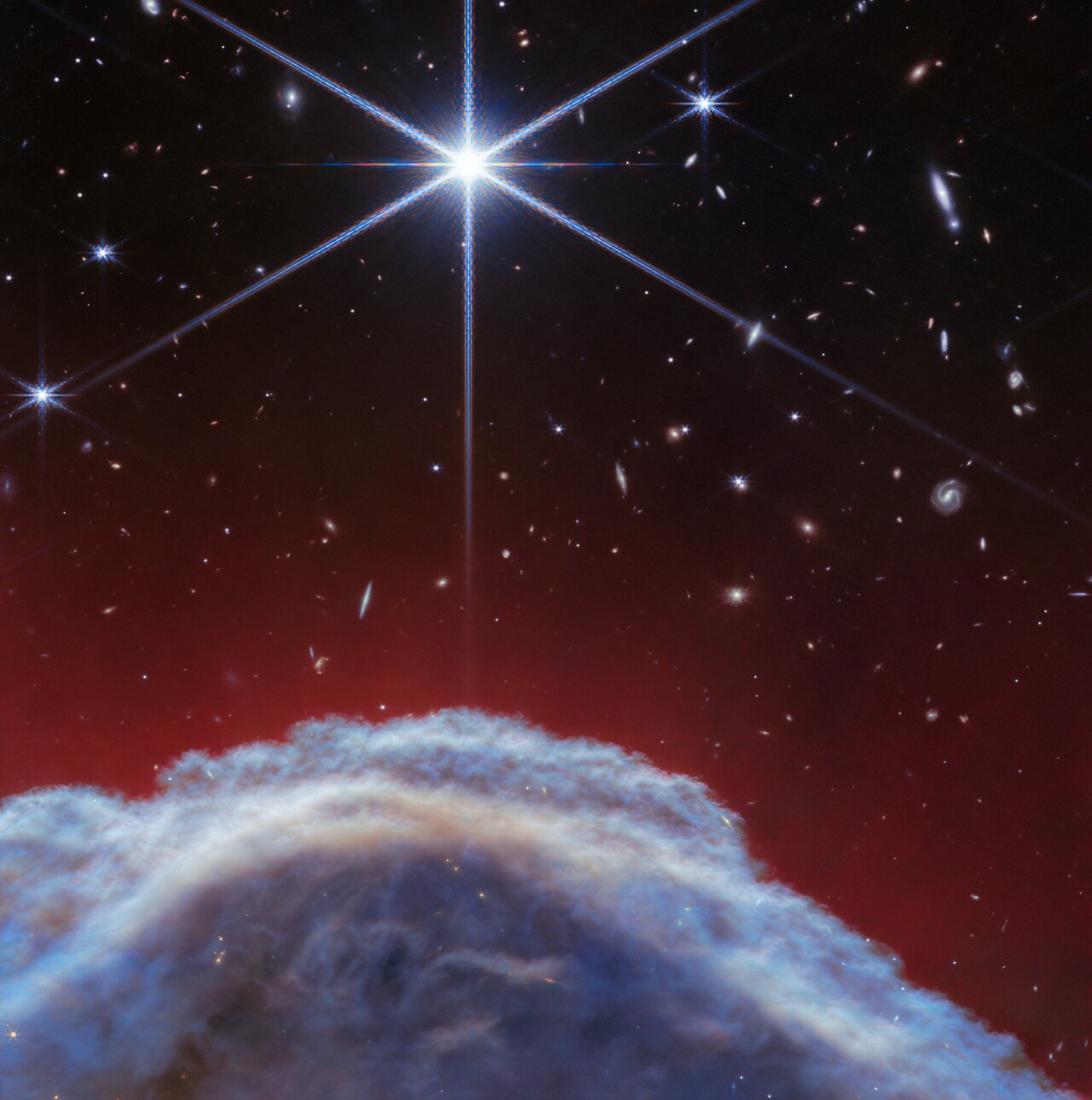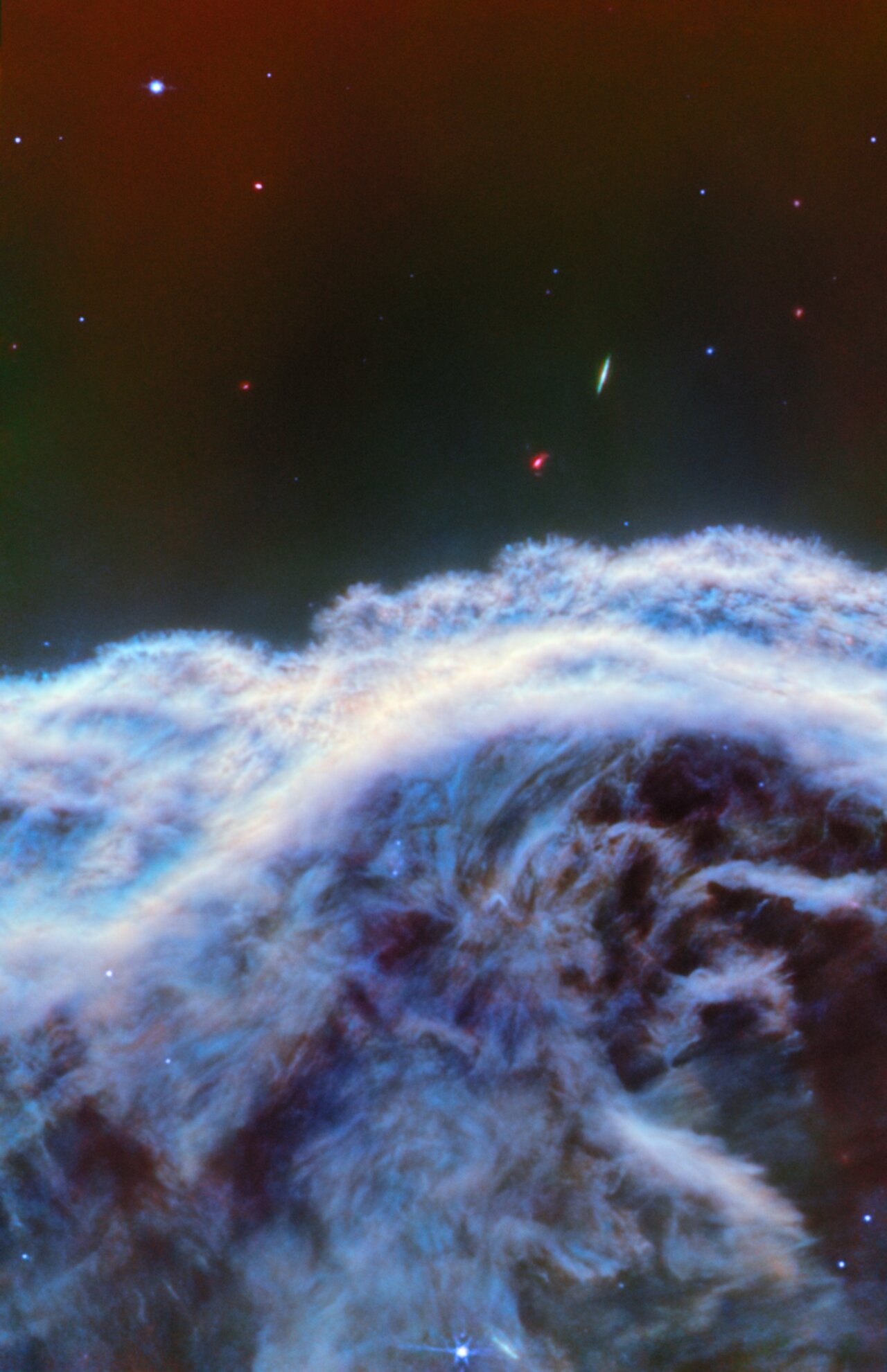[ad_1]
The James Webb House Telescope (JWST) has captured extremely sharp photos of the Horsehead Nebula, one of the vital iconic celestial our bodies within the sky over Earth.
Probably the most highly effective telescope ever positioned into orbit round our planet, the JWST was in a position to see particulars of the Horsehead Nebula, often known as Barnard 33, that had by no means earlier than been revealed, exhibiting some areas in a very new gentle.
The brand new photos present the Horsehead Nebula as turbulent waves of gasoline rising from the western facet of Orion B, a star-forming molecular cloud situated 1,300 light-years from Earth within the constellation of Orion.
Associated: James Webb House Telescope discovers some early universe galaxies grew up surprisingly quick

The Horsehead Nebula is a collapsing cloud of dense, cool gasoline that’s illuminated by a sizzling younger star embedded in its prime left edge. The horse-like construction that makes this nebula so distinctive has been created as a result of lighter gasoline has been eroded. this has left a thick pillar of dense gasoline and mud that’s more durable to erode.
This would possibly not final endlessly, although. Scientists estimate that in round 5 million years, even this pillar of denser matter will probably be gone.

The JWST’s Close to-InfraRed Digital camera (NIRCam) instrument was in a position to seize a small portion of the Horsehead Nebula close-up. This ends in it showing as a curved wall of thick, smoky gasoline and mud with distant stars and galaxies over it. Notably evident is one massive and brilliant star that reveals the distinctive diffraction spikes related to photos created utilizing the JWST.

The JWST’s different main digital camera, the Mid-Infrared Instrument (MIRI) was additionally in a position to catch a shocking picture of a part of the Horsehead Nebula. A small portion of the nebula fills over half of this picture with thick white and blue smoke punctuated by darkish voids.

The Horsehead Nebula is a photon-dominated area (PDR), an space of house the place younger huge stars heat up the gasoline and mud between stars. These chilly clouds exist between hotter ionized gasoline nearer to the new child stars. In PDRs, these stars affect the chemistry of this gasoline and mud with their ultraviolet gentle emissions. PDRs are discovered between stars the place gasoline is dense sufficient to withstand ionization however remains to be not too dense to permit ultraviolet gentle to move via it.
Finding out the sunshine from PDRs permits scientists to review how interstellar matter evolves and the chemical processes that outline this evolution.
The truth that the Horsehead Nebula is comparatively near Earth means that it’s the excellent PDR for astronomers to make use of in conducting these investigations, figuring out the construction of PDRs, and learning the interactions of radiation and chemistry in interstellar house. These photos present that the JWST is poised to make an affect on this investigation.
The outcomes of the JWST’s investigation of the Horsehead Nebula have been accepted for publication within the journal Astronomy & Astrophysics.
[ad_2]
Supply hyperlink

